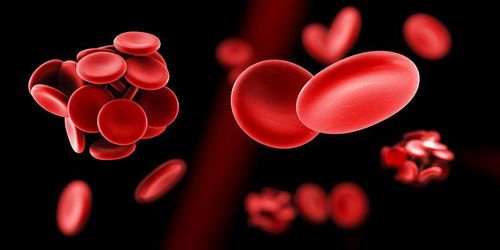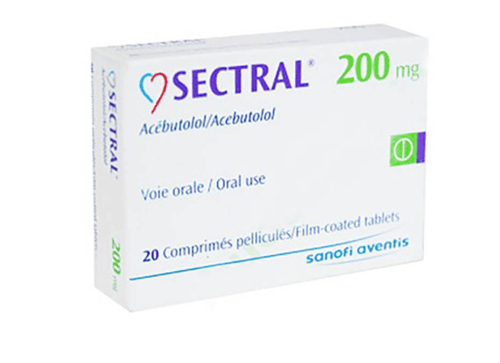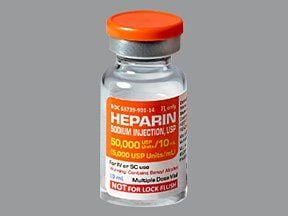This is an automatically translated article.
Non-ST-segment elevation myocardial infarction is a form of acute coronary syndrome, characterized by elevation of cardiac enzymes in the blood and the absence of ST-segment elevation on the electrocardiogram. If non-ST elevation myocardial infarction is not detected and treated promptly, it will lead to dangerous complications for the patient. Let's find out what non-st-elevation myocardial infarction is in the article below.
1. What is a non-ST-elevation myocardial infarction?
Non-ST-elevation myocardial infarction (Non ST Segment Myocardial Infarction (NSTEMI), also known as subendocardial myocardial infarction) is a form of acute coronary syndrome. This is an acute myocardial ischemia caused by the blockage of a coronary artery branch, leading to myocardial necrosis and potentially dangerous, life-threatening complications.
Non-ST elevation myocardial infarction is usually diagnosed based on chest discomfort, angina-like findings, ST depression or T(-) on the electrocardiogram, and elevation of cardiac enzymes. showing myocardial necrosis.
2. Symptoms of non-ST-segment elevation myocardial infarction
Clinical: About 20% of cases of myocardial infarction are silent, transient, patients often have no symptoms or symptoms are not obvious leading to no recognition of the disease, especially often seen in patients diabetes. Unstable angina is one of the manifestations of non-ST-elevation myocardial infarction. Symptoms may occur in non-ST-elevation myocardial infarction such as:
Symptoms: Usually appear days to weeks before the occurrence of myocardial infarction. Severe pain behind the sternum, spreading to the back, arms, jaw, shoulders, ... severe pain with prolonged time. Shortness of breath, especially in the elderly. Sweating, pale skin. Fear, anxiety. Vomiting and nausea are common in inferior myocardial infarction. The pain may be relieved with rest or with nitroglycerin. Asthenia, pulmonary edema, shock, arrhythmia. Central or peripheral cyanosis. Weak pulse, fluctuating blood pressure. May faint. Physical symptoms: About 15% of patients have chest wall pain, auscultation with systolic murmur at the apex. Subclinical: There is an increase in cardiac enzymes in the blood: Troponin I or Troponin T and CK levels increase. On the electrocardiogram, there is no ST segment elevation, ST segment changes such as depression, T wave inversion.
3. Diagnosis of non-ST-elevation myocardial infarction
Blood test: Troponin test is important to diagnose non-ST-segment elevation myocardial infarction. In addition, it is necessary to perform other tests such as blood count, liver and kidney function assessment, electrolytes, thyroid function, blood fat indexes, diabetes screening,...
Diagnosis image:
Electrocardiogram: Can see ST wave depression, T sharp negative in chest pain. The electrocardiogram cannot differentiate non-ST-segment elevation myocardial infarction from unstable angina, and the differential diagnosis should be based on cardiac enzyme testing. Echocardiography: May show reduction or loss of myocardial motor zone, ventricular dysfunction, in addition may show valvular lesions, other causes of chest pain. Computed tomography coronary angiography: Recommended in patients with low or moderate risk of coronary artery disease, electrocardiography or cardiac enzyme tests are within normal limits. Percutaneous coronary angiography: Recommended in patients with a very, very high likelihood of coronary artery disease. Need to differentiate between non-ST-segment elevation myocardial infarction with ST-segment elevation myocardial infarction, aortic dissection, pulmonary embolism, inflammation - pericardial effusion, chest pain due to: about lungs - pleura, intercostal nerves, diseases of esophagus - stomach,...
4. Risk stratification
Risk stratification in acute coronary syndromes helps to make accurate and timely treatment decisions.
Risk stratification factors include clinical (based on age, history of coronary heart disease, diabetes mellitus, left ventricular dysfunction, symptoms of chest pain, presence of heart failure, hypotension or not), electrocardiogram ECG (ST wave change, T wave change), myocardial biomarker (troponin I or T), GRACE score (including advanced age parameters, Killip grade, systolic blood pressure, ST wave change) , circulatory arrest, creatinine level, cardiac enzyme elevation, heart rate).
Consists of 4 risk groups:
Very high risk: Urgent intervention is required within 2 hours of a confirmed diagnosis. High risk: Needs intervention within 24 hours. Moderate risk: Need an intervention plan within 72 hours. Low risk: Interventional or conservative treatment may be considered.
5. Treatment of non-ST-elevation myocardial infarction
5.1. Conservative treatment of non-ST-segment elevation myocardial infarction Conservative drug therapy is the preferred approach in patients with low-risk MI.
Conservative treatment is usually indicated in the following cases:
Patients at high risk but unable to use interventions, have multiple comorbidities. The patient had an adverse coronary angiogram but the patient refused interventional treatment. Patients with low risk but high-risk exercise angiography or who show evidence of recurrent ischemia. Patients with acute myocardial infarction should be injected with the following drugs, except for contraindications:
Commonly used antiplatelet drugs are aspirin, clopidogrel. Anticoagulants: Bivalirudin, heparin. Glycoprotein IIb/ IIIa inhibitor: Used in some high-risk patients. Nitroglycerin: Has analgesic effect. Beta-blockers: Effective in treating angina, hypertension, heart failure, arrhythmia,... ACE inhibitors have a stabilizing effect on blood pressure for patients. Statinho. Thrombolytics are not indicated for non-ST-elevation myocardial infarction because the risks outweigh the benefits. After discharge, patients need to maintain medication to prevent relapse.
5.2. Interventional treatment in non-ST-segment elevation myocardial infarction Some patients are hospitalized with non-ST-segment elevation coronary syndromes with features of elevated cardiac enzymes, new onset of ST-segment depression, symptoms of heart failure, New or worsening mitral regurgitation, prolonged ventricular tachycardia, chest pain, hypotension, arrhythmia, coronary vasospasm within the past 6 months, history of coronary artery bypass grafting, ejection fraction Left ventricular effusion less than 40%.
In this situation, the patient will have a coronary angiogram to determine the damage and decide on the treatment. Usually, these patients will be treated with cannula for coronary circulation.
Contraindications to coronary intervention are:
Patients with uncomplicated non-ST-segment elevation myocardial infarction Complete occlusion of the coronary artery causing myocardial infarction (usually uncommon). In addition, after being discharged from the hospital, the patient needs to change his lifestyle (stop using tobacco, alcohol, exercise, sports, avoid stress in life,...), implement a regimen eat healthy and good for the heart (should limit salt intake; avoid using processed foods, greasy foods; should eat a lot of fruits and vegetables,...), take medicine exactly as prescribed doctor and regular check-ups.
Please dial HOTLINE for more information or register for an appointment HERE. Download MyVinmec app to make appointments faster and to manage your bookings easily.













